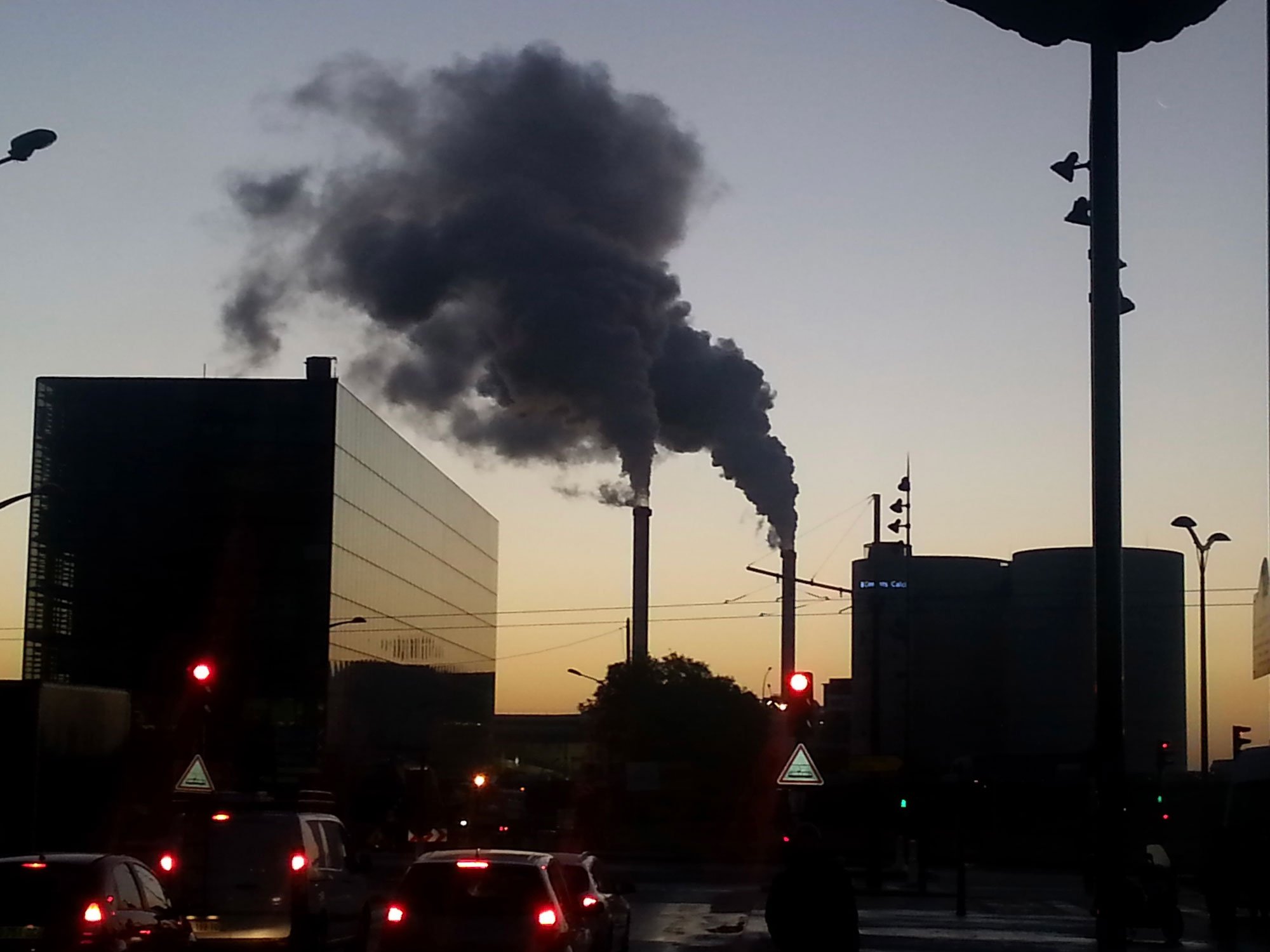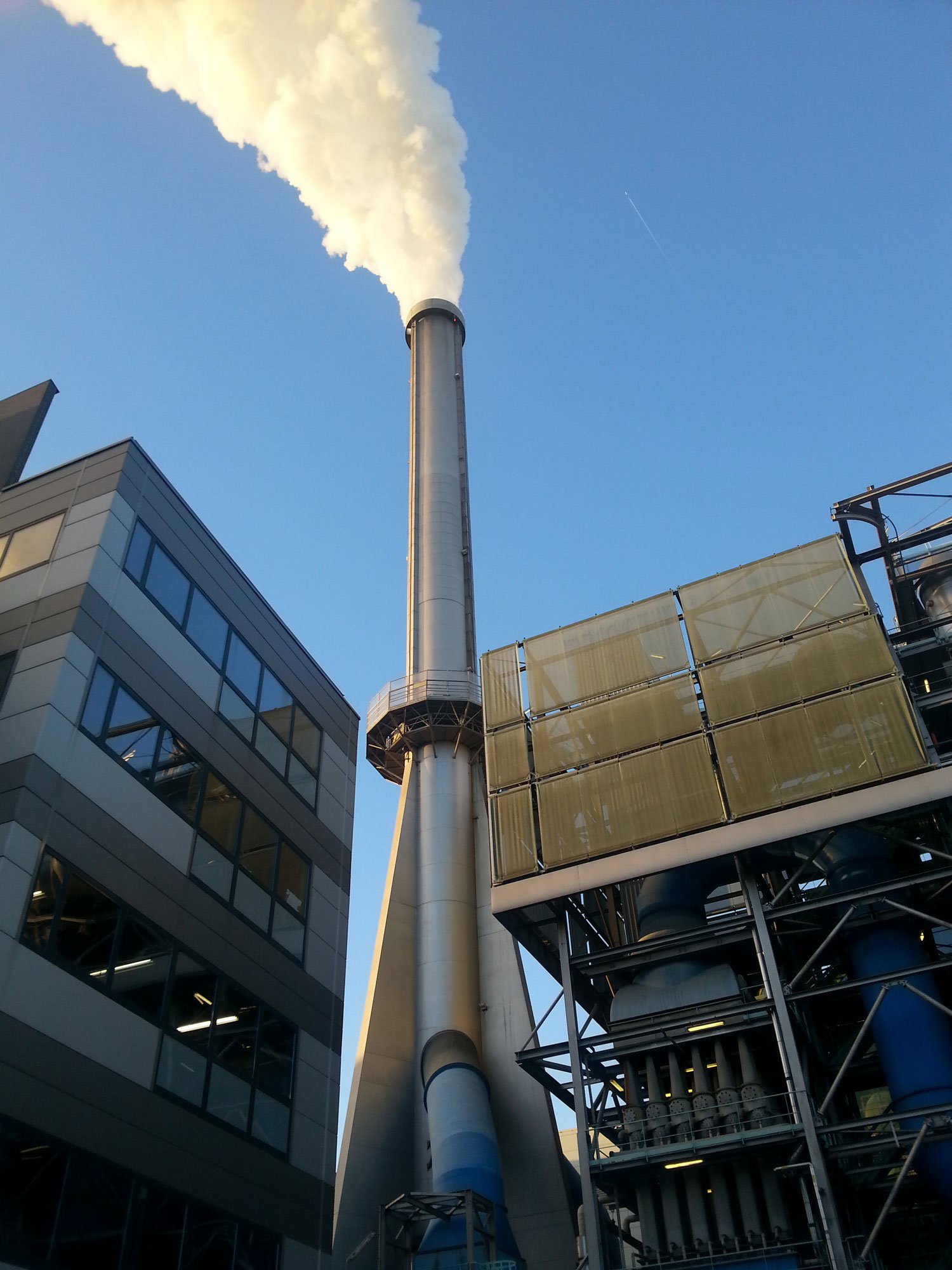
You can see why Sydney doesn’t want this in their skyline. What makes anyone think the Northern Rivers wants it in theirs?
Photo Jane Bremmer
The residents of the Richmond Valley LGA have had seven weeks to simmer over the possibility of a waste incinerator coming to town.

National Toxics Network Coordinator Jo Immig knows a lot about the subject and she’s happy to share it with Richmond Valley Council (RVC).
Ms Immig says that Sydney residents and planning authorities have quite rightly rejected waste incinerators in their backyards.
‘After feeling the political heat, the NSW Government decided to send waste and incinerators to the regions instead. They’ve identified Casino in the Northern Rivers as one of four locations to build ‘energy from waste’ facilities.
‘Without any public consultation or social licence, the Government declared burning waste will play a key role in the management of waste for decades to come. To add insult, these proposals are dressed up as generators of “renewable energy”, attracting public subsidies and making them appear more palatable to receiving communities.’
Incinerator or not?
At the RVC meeting, staff made a point of the misuse of the word ‘incinerator’. Is the technology used to burn waste for energy an incinerator?
Jo Immig says that proponents of waste-to-energy technologies don’t like the word incinerator. ‘It conjures up Dickensian images with chimney stacks belching out sooty pollution. While modern incinerator flue emissions might look “cleaner” they release some of the deadliest pollutants known.
‘Just to be clear these are incinerators. According to Schedule 1 of the NSW Protection of the Environment Operations Act 1997, thermal treatment means the processing of waste by burning, incineration, thermal oxidation, gasification, pyrolysis, plasma or other thermal treatment processes. Practically every waste-to-energy thermal facility around the world uses incineration technology, also called mass combustion or mass burn.’
But waste to energy incinerators are ‘state of the art’ technology we hear from those who would turn our backyard into their dump.
Ms Immig says the fundamentals of waste incinerators haven’t changed. ‘Waste arrives at one end and is conveyed to the combustion chamber and burned with varying levels of oxygen and temperatures depending on the system used. The heat released from burning materials is used to convert water to steam. The steam is sent to a turbine generator to produce electricity. Pretty old school so far.’
Bottom ash contaminated with toxic heavy metals, salts…
During the combustion process about one tonne of ‘bottom’ ash is created for every four tonnes of burnt waste. Bottom ash is a problem. Proponents claim it can be ‘recycled’ by adding it to construction materials like concrete, bricks or road base, but it’s contaminated with toxic heavy metals, salts, and persistent organic pollutants that all leach out.
‘If we really want to recycle materials within a circular economy, we can’t contaminate the material supply chain with bottom ash or try to hide it in road base,’ says Ms Immig.
‘Where things differ today is the pollution control equipment.’
Ms Immig says that previously incinerators didn’t burn such a diversity of composite synthetic materials like plastics, adhesives or treated timbers.
‘Two-thirds of the cost of a waste incinerator is the air pollution control equipment (APC). The equipment is designed to capture particles from flue gases and scrubbers collect toxic chemical residues. The APC does not capture dangerous and unregulated nanoparticles which are emitted by incinerators.
‘The maintenance of APC equipment and other bypass events ironically results in the release of significant pollution spikes.

Toxic fly ash
‘A year’s worth of pollution can be released in just one bypass event. The fly ashes created are highly toxic and need to be disposed of in a hazardous waste landfill.
‘Incineration technology today is less “state of the art” and more “state of the pollution”. There’s been no ground-breaking advancement in pollution technology, just an awareness that more is needed to deal with the growing toxicity of the waste stream. It’s certainly not “world’s best practice” to generate deadly dioxins or send toxic ash to landfill.’
Toxic air pollutants that harm health
A few years ago, Northern Rivers council representatives were invited to tour waste to energy incinerators in Japan.
Ms Immig says they were impressed with what saw and began hatching a plan to locate one in Casino.
‘Japan relies on waste incineration to manage around 75 per cent of its waste due to its land constraints. What the representatives didn’t report back to their constituents is the fact that Japan has one of the highest levels of dioxin contamination in the world as a direct result of waste incinerators. The Japanese Government is scrambling to know how to manage this problem.
It’s not a magic solution – what goes in comes out
‘Incinerators don’t magically disappear toxic chemicals embedded in materials. If you put toxics in, toxics come out. The combustion process transforms and concentrates chemicals into even more deadly ones like dioxins and furans and nano-particulates,’ she explained.
‘In their efforts to sell waste incinerators to concerned communities, proponents go as far as to say, “nothing toxic comes out the flue” and “they are safe and protect health”. It’s a blatant lie.
‘Think about it, if waste incinerators were rejected by planning authorities in Sydney because of air pollution concerns and public health impacts, pollutants obviously come out the flue.’
A range of adverse health effects
Ms Immig says that a 2019 systematic review of the health impacts of waste incinerators published in the Australia and New Zealand Journal of Public Health concluded: ‘A range of adverse health effects were identified, including significant associations with some neoplasia, congenital anomalies, infant deaths and miscarriage, but not for other diseases. Ingestion was the dominant exposure pathway for the public’.
‘Perhaps the NSW Government’s thinking is that since the Northern Rivers has relatively clean air, polluting it by burning Sydney’s waste won’t make much difference. But it will,’ points our Ms Immig.
‘Waste incinerators cost hundreds of millions of dollars to build, and councils are contracted to supply waste to them for decades, which means decades of pollution contaminating our air, soil, water, food and ecosystems. Exposure to persistent and cumulative pollutants like dioxins and heavy metals is never safe locally or globally.’
Burning waste creates clean, renewable energy – not
Ms Immig says that it’s important to understand incinerators are essentially a waste disposal system and not a genuine source of renewable energy or part of the circular economy.
‘Yes, they do create comparatively small amounts of energy, but you need to assess the whole process to understand the energy is neither clean nor renewable. Energy generated from burning waste is one of the dirtiest forms of energy around and the most expensive,’ she said.
‘While we citizens have been beavering away minimising waste and separating our recycling, the global plastics industry has grown enormously and now contaminates every corner of the planet with its products. Waste incinerators are great for burning plastic and incinerators are the plastic industry’s ticket to keep extracting and making more plastic.
‘If you remove organics and recyclable materials from waste streams, what’s left is largely non-recyclable mixed plastics. Plastics are made from petrochemical fossil fuels so once they’re burnt their embodied energy is gone forever. This is not “renewable” energy unless your idea of renewable is that you keep extracting oil and making more plastic.
Humans are trashy
‘Nature doesn’t waste. Waste is fundamentally a human design problem. It’s an artefact of a linear resource extraction and a disposal mindset. Waste incineration dressed up as “renewable energy” is not part of our climate constrained future. We need to revolutionise the way we use finite resources and urgently adopt Zero Waste policies that drive re-design, re-use and recycling within a circular economy.’
The webpage explains how these facilities combined will burn 3,909,500 million tonnes of waste every year. This will contribute more than four million tonnes of greenhouse gases into the atmosphere every year, representing a major climate pollution threat for Australia.
For more information about incinerators and other waste issues, visit Zero WasteOZ.
